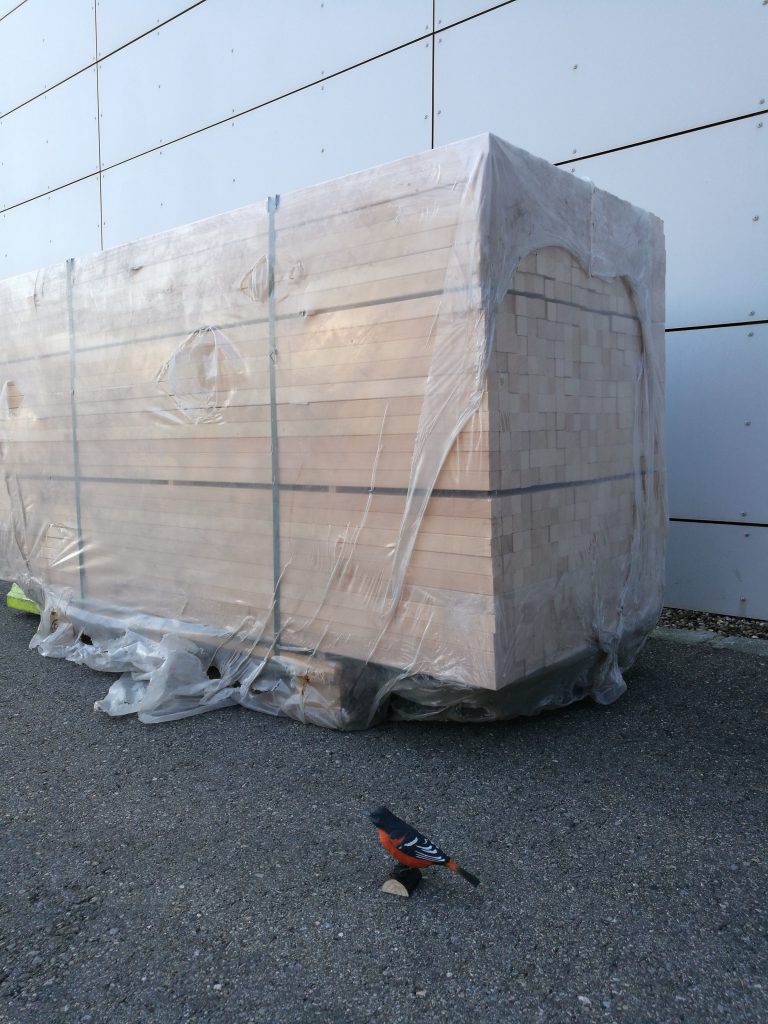


From the saw mill, the laths come in big piles and are cut to measure in length precisely to the millimetre. The lengthwise edges are chamfered.
First, the quality is checked. In rare cases, we discover vagaries of nature: a crack, a hole, a splint, an excessive curvature.




First, the numerous holes for the clothes line, suspension ropes and the screws are drilled: the holes “across” using a box column drill, the blind holes using a horizontal drilling machine.


Finally, the laths are sanded on all four sides before they are oiled or varnished.


One can easily overlook and underestimate the base plate: it holds the rope ends and it is the fixture for the cleat.
With its thickness, it creates a distance to the wall in order that the pulley system does not scratches along the wall and produces ugly traces.
The small base plate helps to operate Hangbird. It comes in two variants for the twofold and fourfold pulley system.


